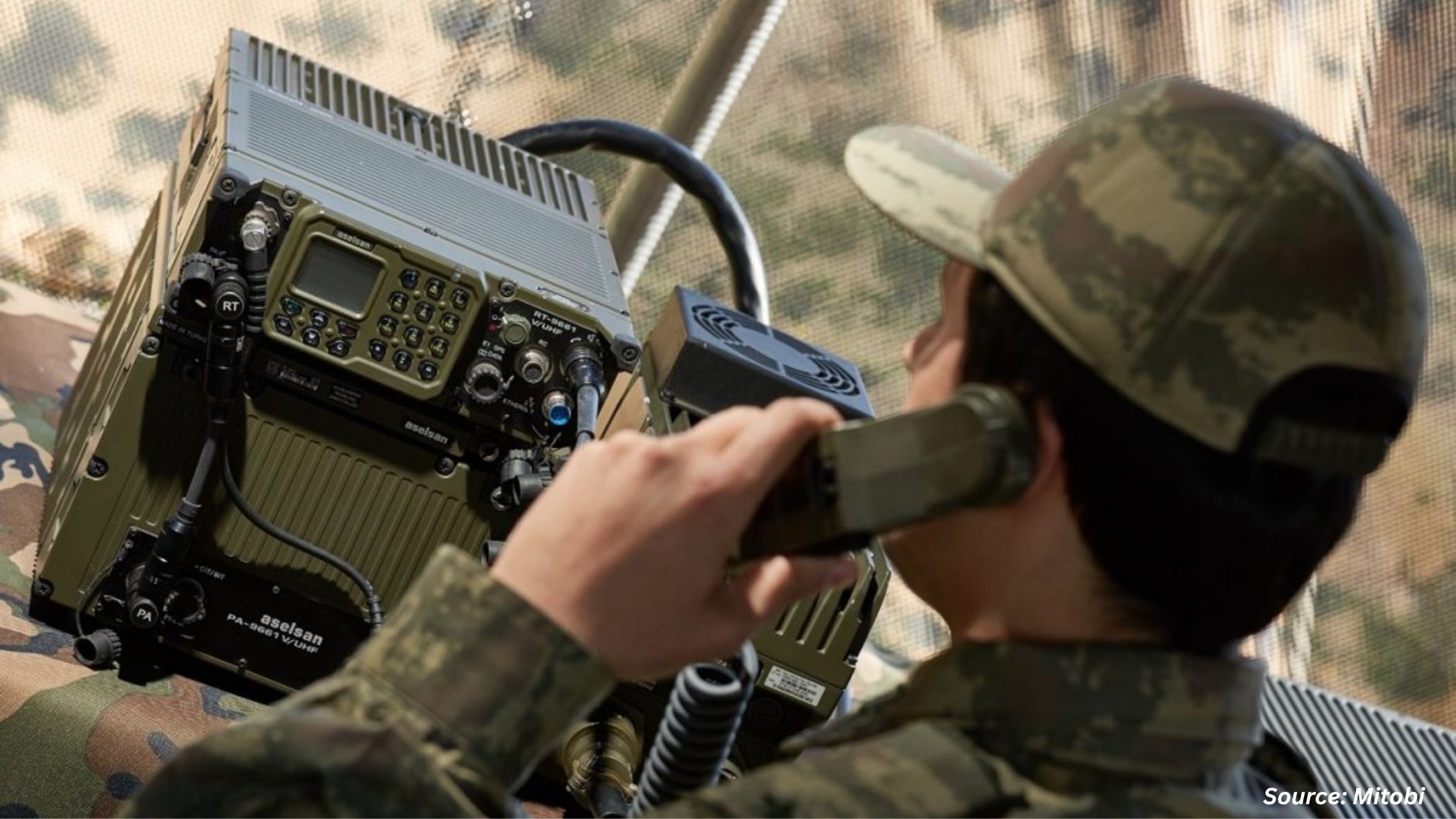
Teleoperation Systems Market by Component, (Hardware, Software, Services), by System Type, (Teleoperation Systems, Telerobotics Systems, Telepresence, Remote Monitoring and Control), by Robot Type, (Robotic Arms (Industrial and Collaborative), Mobile Platforms (UGVs, AGVs, AMRs), Aerial Platforms (UAVs), Marine Platforms (ROVs/AUVs), Medical Robots, Other Specialty Robots), by Control Mechanism, (Direct (human-in-the-loop) and others – Global Opportunity Analysis and Industry Forecast, 2024-2030
Market Definition
The Teleoperation Systems Market size was valued at USD 501.2 million in 2023 and is predicted to reach USD 2297.7 million by 2030 with a CAGR of 24.3% from 2024 to 2030. A teleoperation system, also known as remote operation or telepresence, facilitates the control of machines or devices from a distance through the utilization of communication networks including the internet or specialized transmission mediums. This technology enables operators to manipulate equipment, robots, or vehicles in real-time, allowing for tasks to be performed in hazardous, inaccessible, or distant environments without the need for direct physical presence at the location of operation.
These systems can range from simple setups for controlling basic movements to sophisticated platforms equipped with advanced sensors, actuators, and AI algorithms for complex tasks requiring precision and autonomy. Teleoperation plays a crucial role in improving efficiency, safety, and productivity in various industrial operations by enabling remote monitoring, maintenance, and operation of equipment with minimal human intervention at the physical site.
Market Dynamics and Trends
The increasing adoption of robotics across various industries, including automotive, healthcare, and mining, is driving the growth of the Teleoperation Systems Market. According to the latest report published by the International Federation of Robotics, the adoption of robots in the industrial sector is growing significantly, with 553,000 industrial robots installed across numerous industries. The electronic industry dominates robot adoption with 157,000 robot installations, followed by the automotive sector with 136,000 robot installations.
Moreover, the expansion of space research and exploration initiatives is playing a pivotal role in propelling the growth of the teleoperation systems market. With an increasing number of missions being undertaken to explore distant celestial bodies such as planets, moons, and asteroids, there is a growing demand for sophisticated teleoperation systems to enable remote operation and control of spacecraft, rovers, drones, and other robotic explorers in environments where direct human intervention is impractical or impossible. As space agencies and private companies continue to push the boundaries of space exploration, the need for advanced teleoperation technology becomes ever more crucial to ensure the success and safety of these missions.
However, higher cost of the hardware and software devices along with less availability of skilled workforces to operate the system are the factors expected to restraint the growth of the teleoperation systems market. On the other hand, introduction of artificial intelligence is anticipated to create ample opportunities in the growth of the teleoperation system market. By leveraging AI-driven features such as predictive analytics, pattern recognition, and adaptive control, teleoperation systems can offer enhanced precision, flexibility, and autonomy in remote operations across various industries and applications.
Market Segmentations and Scope of the Study
The teleoperation system market is segmented on the basis of component, enterprise size, application, and region. On the basis of component, the market is divided into hardware, software, and services. On the basis of enterprise size, the market is classified into large enterprises and small enterprises. On the basis of application, the market is separated into transportation & logistics, healthcare & medical, military & public safety, smart factory/industry 4.0, energy & power, agriculture, and teleoperations for others. Regional breakdown and analysis of each of the aforesaid segments include regions comprising North America, Europe, Asia-Pacific, and RoW.
Geographical Analysis
North America holds the dominant share of biotechnology equipment market and is expected to continue its dominance during the forecast period. This is attributed to the presence of one of the largest space sectors in this region. According to the latest report released by the U.S. government, the space industry stands as one of the largest sectors in the U.S., having reached a value of USD 211.6 million in 2021 and it is projected to experience substantial growth in the foreseeable future.
Also, the presence of key market players in the region including iRobot, Google, and IBM that are offering teleoperation solutions is thereby expected to boost the growth of the teleoperation system market in the region. For instance, in August 2022, Amazon reached Amazon acquired iRobot's consumer robot division for USD 1.7 million. These solutions enable tasks such as navigation around obstacles and furniture, cleaning, and autonomous return to charging docks upon completion, contributing to the market's expansion.
On the other hand, Asia Pacific is expected to show a steady rise in the teleoperation systems market due to the growing adoption of robotics in the numerous industries in this region. According to the latest report published by the International Federation of Robotics, the adoption of robots in the industrial sector is growing significantly in the Asia Pacific region, with Chinese companies installing over 290300 robots, followed by Japan’s 50400 robot installation in 2022.
Moreover, the expanding implementation of telerobotics applications in agriculture is poised to have a substantial impact on the growth trajectory of the teleoperation systems market in the region. This trend reflects a shift towards automation and remote-control solutions in farming practices, enabling farmers to remotely operate machinery, monitor crops, and manage agricultural tasks more efficiently. With the increasing adoption of advanced technologies such as drones, autonomous tractors, and robotic harvesters, the demand for teleoperation systems that facilitate seamless remote control and monitoring is expected to witness a significant surge. This transformation is driven by the need to enhance productivity, optimize resource utilization, and address labor shortages in the agriculture industry, thereby paving the way for robust growth opportunities in the teleoperation systems market.
Competitive Landscape
Various market players operating in the teleoperation system market includes ABB Group, KUKA AG, FANUC Corporation, IRobot Corporation, Clearpath Robotics Inc, Formant Inc, Ottopia Technologies Ltd, DriveU.auto, Taurob GmbH, The Shadow Robot Company Limited, Roboauto S.r.o, Soliton Systems K.K, FERNRIDE GmbH, MedAcuity LLC, Haption, Scythe Robotics Inc, Extend Robotics Limited, Orient Robotics Pte. Ltd, Transitive Robotics Inc, Telexistence Inc.. These market players continue to adopt various market development strategies including product launches and joint venture to maintain their dominance in the teleoperations system market. For instance, in October 2022, Telexistence Inc. Telexistence and SENKO conducted demonstration tests of the TX robot solution (a hybrid remote‑and‑AI‑controlled system) at SENKO’s Nishikanto Logistics Center.
Key Benefits
-
The report provides quantitative analysis and estimations of Teleoperation System Market from 2024 to 2030, which assists in identifying the prevailing market opportunities.
-
The study comprises a deep dive analysis of the Teleoperation System Market including the current and future trends to depict prevalent investment pockets in the market.
-
Information related to key drivers, restraints, and opportunities and their impact on the Teleoperation System Market is provided in the report.
-
Competitive analysis of the players, along with their market share is provided in the report.
-
SWOT analysis and Porters Five Forces model is elaborated in the study.
-
Value chain analysis in the market study provides a clear picture of roles of stakeholders.
Key Market Segments
By Component
-
Hardware
-
Cameras And Sensors
-
Communication Devices And Systems
-
Controllers And Input Devices
-
Haptic Devices
-
Wearables
-
Robotic Platforms
-
Telemanipulator Arms
-
Remote Vehicles
-
-
-
Software
-
Teleoperation Control Platforms
-
Ai/ml-based Remote-operation Engines
-
Simulation And Visualization (vr/ar/digital-twin)
-
Data And Video-transmission Software
-
-
Services
-
Design And Development
-
Consulting And Training
-
System Integration And Deployment
-
Maintenance And Support
-
By System Type
-
Teleoperation Systems
-
Telerobotics Systems
-
Telepresence
-
Remote Monitoring And Control
By Robot Type
-
Robotic Arms (industrial And Collaborative)
-
Mobile Platforms (ugvs, Agvs, Amrs)
-
Aerial Platforms (uavs)
-
Marine Platforms (rovs/auvs)
-
Medical Robots
-
Other Specialty Robots
By Control Mechanism
-
Direct (human-in-the-loop)
-
Supervisory (semi-autonomous)
-
Shared Control (human + Ai)
-
Fully Autonomous W/ Remote Intervention
By Application Vertical
-
Industrial Automation / Smart Factory
-
Transportation And Logistics
-
Healthcare And Telemedicine
-
Defense, Military And Public Safety
-
Energy, Utilities And Oil And Gas
-
Mining And Construction
-
Agriculture
-
Retail, E-commerce And Consumer Services
-
Nuclear And Hazardous Environments
-
Education And Research
-
Entertainment And Media
-
Other Emerging Verticals
By Region
-
North America
-
The U.S.
-
Canada
-
Mexico
-
-
Europe
-
The UK
-
Germany
-
France
-
Italy
-
Spain
-
Denmark
-
Netherlands
-
Finland
-
Sweden
-
Norway
-
Russia
-
Rest of Europe
-
-
Asia Pacific
-
China
-
Japan
-
India
-
South Korea
-
Australia
-
Indonesia
-
Singapore
-
Taiwan
-
Thailand
-
Rest of Asia Pacific
-
-
RoW
-
Latin America
-
Middle East
-
Africa
-
Key Players
-
ABB Group
-
KUKA AG
-
FANUC Corporation
-
IRobot Corporation
-
Clearpath Robotics Inc.
-
Formant Inc.
-
Ottopia Technologies Ltd.
-
DriveU.auto
-
Taurob GmbH
-
The Shadow Robot Company Limited
-
Roboauto S.r.o.
-
Soliton Systems K.K.
-
FERNRIDE GmbH
-
MedAcuity LLC
-
Haption
-
Scythe Robotics Inc.
-
Extend Robotics Limited
-
Orient Robotics Pte. Ltd.
-
Transitive Robotics Inc.
-
Telexistence Inc.
REPORT SCOPE AND SEGMENTATION:
|
Parameters |
Details |
|
Market Size in 2023 |
USD 501.2 million |
|
Revenue Forecast in 2030 |
USD 2297.7 million |
|
Growth Rate |
CAGR of 24.3% from 2024 to 2030 |
|
Analysis Period |
2023–2030 |
|
Base Year Considered |
2023 |
|
Forecast Period |
2024–2030 |
|
Market Size Estimation |
Million (USD) |
|
Growth Factors |
|
|
Countries Covered |
28 |
|
Companies Profiled |
20 |
|
Market Share |
Available for 10 companies |
|
Customization Scope |
Free customization (equivalent up to 80 working hours of analysts) after purchase. Addition or alteration to country, regional, and segment scope. |
|
Pricing and Purchase Options |
Avail customized purchase options to meet your exact research needs. |

















 Speak to Our Analyst
Speak to Our Analyst
























